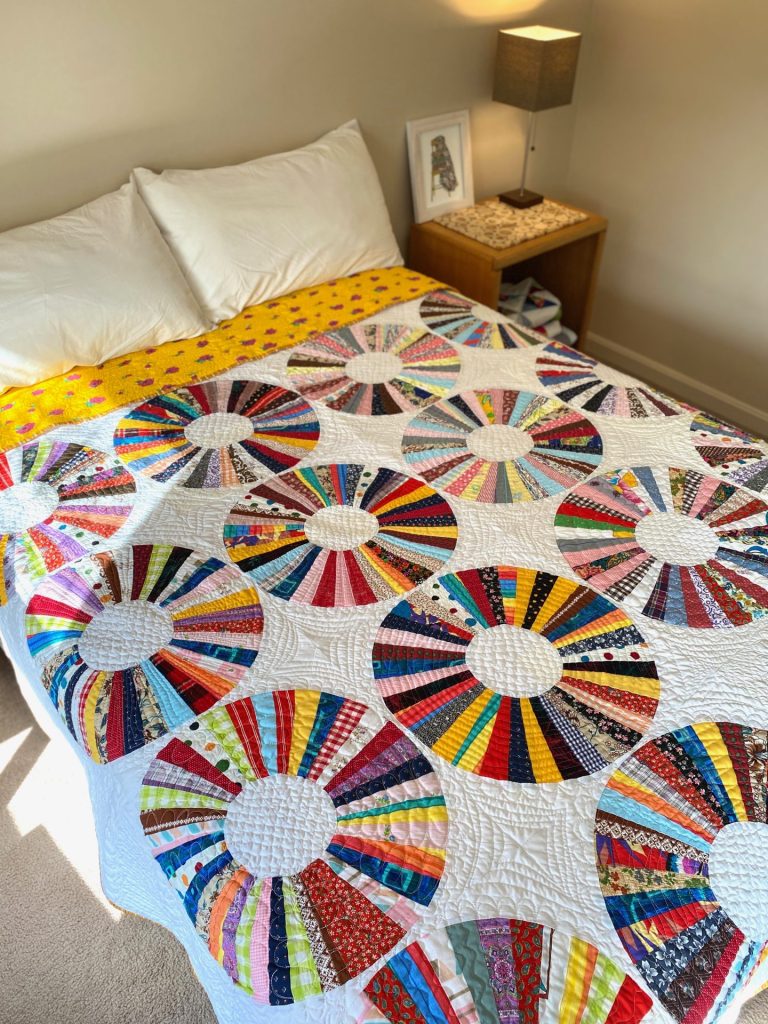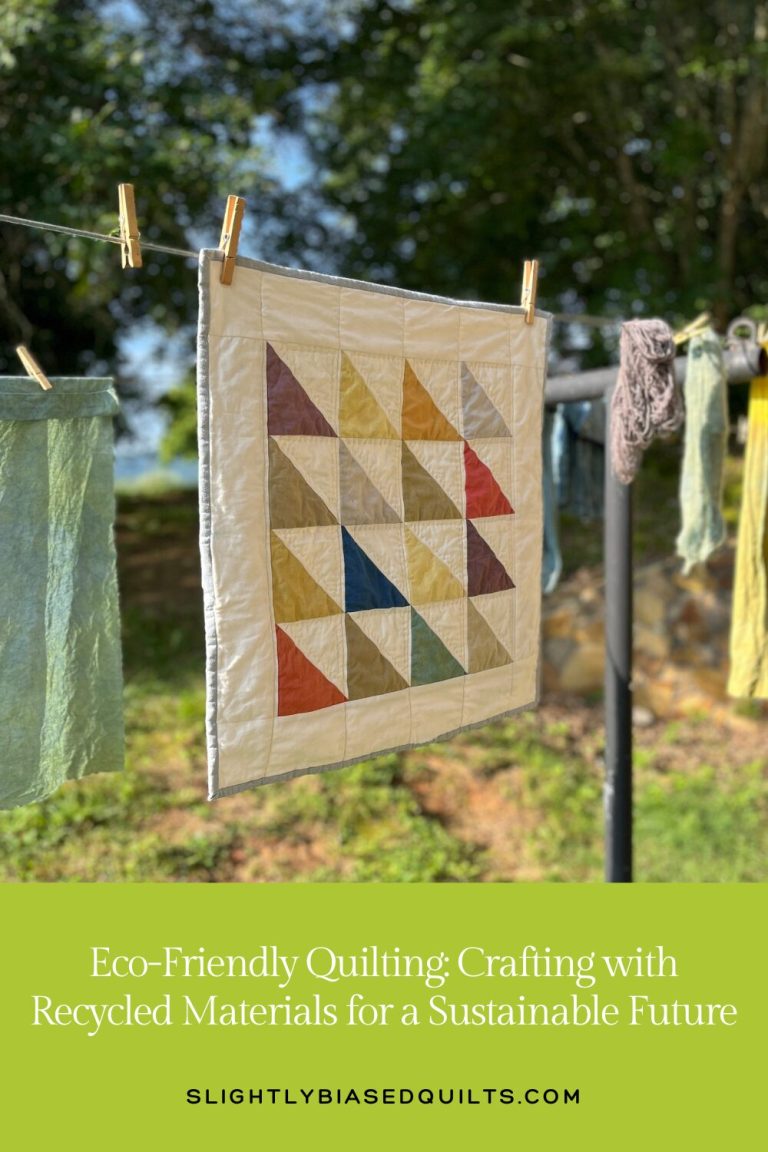With Earth Day’s focus on renewal and growth still lingering, now is the perfect moment to embrace eco-friendly quilting. By diving into your fabric scraps and upcycled materials, you can create vibrant, modern quilts that celebrate sustainability without sacrificing style. Let’s spark inspiration to transform leftover fabrics into unique, earth-conscious creations. Whether you’re stitching a wall hanging, a throw, or a tiny quilted keepsake, eco-friendly quilting helps to reduce waste, save money, and sew stories into every piece. Here’s how to dive into resourceful quilting with tips to make your quilting practice greener and more creative than ever.
Why Eco-Friendly Quilting Matters
Quilting has always been a craft of resourcefulness. Our ancestors stitched together worn clothing and fabric scraps to create warm, beautiful quilts, turning necessity into art. Today, eco-friendly quilting carries that legacy forward by tackling modern challenges like textile waste, which accounts for over 16 million tons in U.S. landfills annually. By using scraps and recycled materials, you’re not just clearing out your stash—you’re making a tangible difference. Plus, scrap quilts have a scrappy, one-of-a-kind charm that’s perfect for modern designs, blending sustainability with a bold, textured aesthetic.
Beyond environmental impact, eco-friendly quilting is a creative playground. The constraints of working with what you have push you to experiment, mix unexpected fabrics, and discover designs you’d never plan with store-bought yardage. It’s also a budget-friendly way to keep quilting, letting you craft heirlooms without spending a dime on new fabric. And when you trade scraps with friends or local quilters, you’re building community while keeping materials out of landfills. Every stitch is a step toward a more sustainable, connected world.
The Vision: Quilts That Tell a Story
Imagine a quilt bursting with color and texture, each piece a fragment of memory—a scrap from a child’s outgrown dress, a remnant from a thrift-store curtain, or a swatch from a long-ago project. Eco-friendly quilting isn’t about perfection; it’s about personality. You might create a patchwork throw with bold geometric shapes, a wall hanging with improvisational curves inspired by blooming gardens, or a tiny quilted coaster set that uses every last snippet. The beauty lies in the mix: vibrant prints, faded linens, and unexpected textures that come together to form something entirely new. By using recycled materials, you’re crafting not just a quilt, but a story—an heirloom that’s as meaningful as it is sustainable.
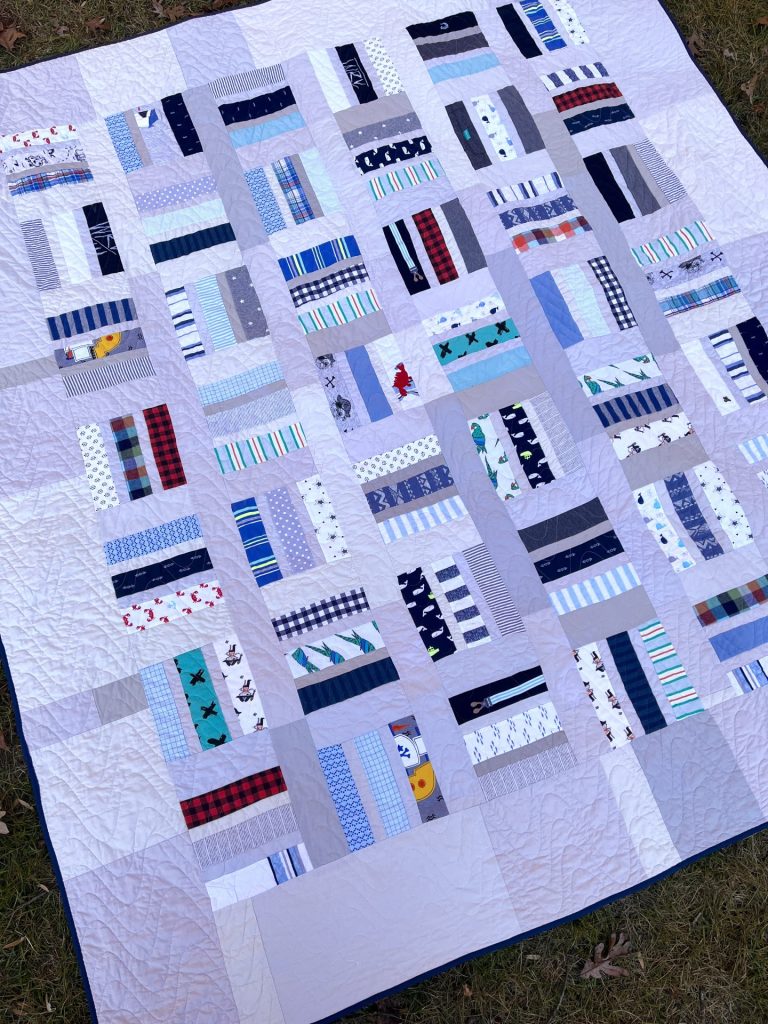
Tips for Eco-Friendly Quilting with Recycled Materials
1. Source Recycled Fabrics Creatively
- Upcycle Household Items: Look beyond your sewing room for materials. Old cotton shirts, denim jeans, linen tablecloths, or even lightweight curtains can become quilt tops or backings. For example, a faded flannel shirt can add soft texture to a patchwork block, while denim scraps create sturdy, tactile contrast.
- Shop Secondhand: Visit thrift stores, estate sales, or online marketplaces like eBay for vintage linens, clothing, or fabric bundles. A $2 cotton dress can yield enough fabric for a mini quilt, and vintage sheets make excellent quilt backings.
- Repurpose Sentimental Items: Incorporate fabrics with personal meaning, like a baby blanket, a favorite scarf, T-shirts from school, or a parent’s old tie. These add emotional depth to your quilt, making it a true keepsake.
- Trade with Quilters: Organize a scrap swap with your local quilt guild. Trading diversifies your stash without new purchases and fosters connection.
2. Prioritize Natural, Biodegradable Fibers
- Choose Cotton, Linen, or Hemp: These fibers are biodegradable and break down naturally, unlike synthetics like polyester, which can linger in landfills for centuries. Check clothing tags or test fabric by burning a small piece (cotton smells like paper and leaves soft ash; synthetics melt and have a chemical smell).
- Test for Quality: Ensure recycled fabrics are quilt-worthy. Wash and iron them to check for fading, fraying, or stretching. Avoid heavily worn or stained pieces unless the aesthetic fits your vision (e.g., a distressed, vintage look).
3. Maximize Scrap Usage
- Cut Strategically: Sort scraps by size and shape before cutting. Use larger pieces for main blocks, medium scraps for borders or appliqué, and tiny bits for improvisational piecing or quilted accessories like keychains.
- Embrace Imperfection: Don’t stress about uneven scraps. Improvisational piecing—sewing scraps together without a strict pattern—creates organic, modern designs. Try “crumb quilting” to use the smallest bits in chaotic, colorful blocks.
- Save Every Snippet: If you are feeling particularly ambitious, keep a jar for scraps too small for your current project. These can become stuffing for quilted ornaments, pet beds, or future micro-quilts.
4. Invest in Sustainable Tools
- Reusable Sewing Supplies: Opt for glass-head pins and metal safety pins. Use a rotary cutter blade sharpener instead of disposing them each time.
- Secondhand Equipment: Look for used sewing machines at thrift stores, online marketplaces, or local repair shops. Older models (e.g., vintage Singers) are often built to last and can be refurbished for less than a new machine’s cost.
- Eco-Friendly Threads: Choose threads made from organic cotton or recycled polyester. Brands like Aurifil offer sustainable options that don’t compromise strength.
- Natural Batting: Use cotton or bamboo batting instead of polyester for a biodegradable quilt interior. If buying new, look for brands like Quilters Dream Cotton with eco-certifications.
5. Minimize Energy and Water Use
- Eco-Friendly Washing: Pre-wash recycled fabrics with plant-based, biodegradable detergents like Seventh Generation or Ecover, to remove dirt or odors. Wash in cold water to save energy.
- Air Dry When Possible: Air dry your finished quilt or fabric scraps to reduce electricity use. If machine drying, use low heat and dryer balls to speed up the process.
- Batch Your Work: Cut, sew, and iron multiple quilt pieces in one session to minimize energy consumption from repeatedly powering up your machine or iron.
6. Design with Versatility in Mind
- Multi-Use Quilts: Create quilts that serve multiple purposes, like a wall hanging that doubles as a table runner or a throw that can be a picnic blanket. This maximizes the quilt’s lifespan and utility.
- Modular Designs: Use block-based patterns (e.g., log cabin, nine-patch) that allow you to mix and match scraps easily. If a block doesn’t fit one project, save it for another.
- Repair and Reuse: Design quilts with durability in mind, using sturdy seams. If a quilt wears out, repurpose it into smaller items like pillows or tote bags.
7. Care for Your Quilt Sustainably
- Eco-Conscious Cleaning: Spot clean quilts with mild soap and water to avoid frequent washing. For full cleaning, use eco-friendly detergent and cold water, then air dry or tumble dry on low.
- Store Properly: Keep quilts in a cool, dry place, ideally in cotton pillowcases or acid-free boxes, to prevent damage. Avoid plastic bags, which trap moisture and encourage mold.
- Pass It On: If you no longer need a quilt, gift it to a friend, donate it to a charity, or repurpose it into new projects to extend its life.
8. Find Inspiration in Your Stash
- Color Stories: Group scraps by color or mood i.e. spring greens, or autumn oranges, to spark design ideas. Lay them out on a design wall or floor to visualize patterns.
- Mix Textures: Combine different fabrics—cotton, denim, linen—for a tactile, eclectic look. For example, a linen scrap from an old curtain can add a soft, drapey contrast to crisp cotton blocks.
- Historical Inspiration: Look to traditional scrap quilts like Gee’s Bend or Amish designs for ideas. Their bold, improvisational style proves you don’t need new fabric to create art.
Experiment Freely: Try techniques like strip piecing, crazy quilting, or appliqué to use irregularly shaped scraps. The “mistakes” often become the most striking parts of a scrap quilt.
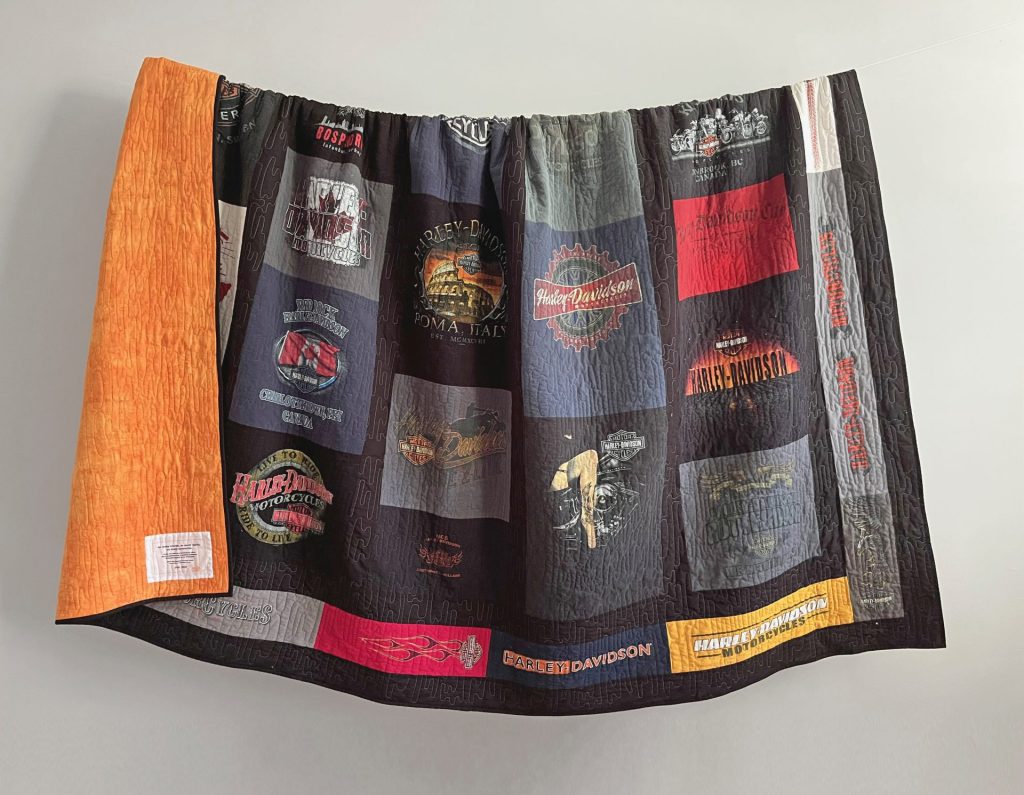
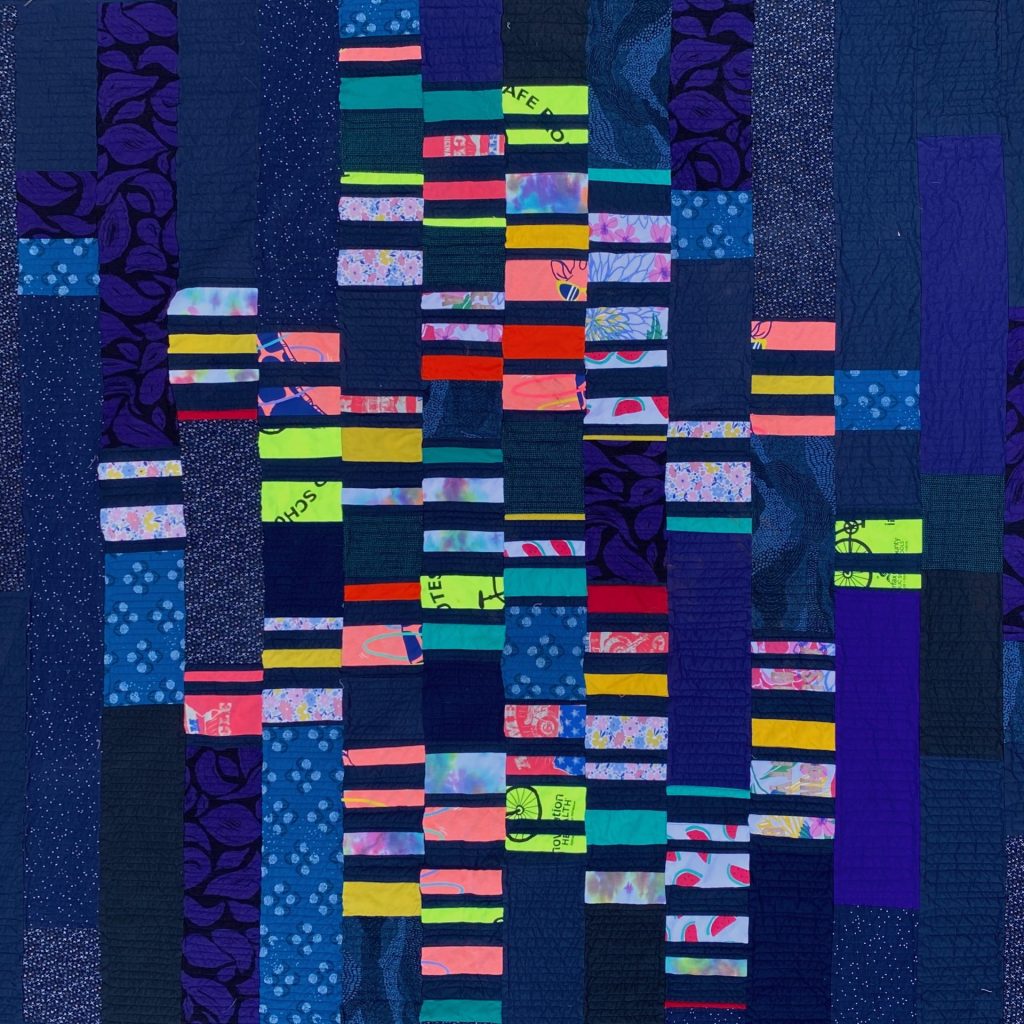
The Beauty of Recycled Quilts
Eco-friendly quilting isn’t about compromise—it’s about celebrating creativity and resourcefulness. The mix of recycled fabrics creates a quilt that’s alive with texture, color, and history. A patch from a thrift-store shirt might sit next to a remnant from your first quilt, each piece carrying its own story. The result is a modern, vibrant heirloom that’s as unique as you are. Whether it’s a wall hanging that brightens your living room, a throw that warms your evenings, or a tiny quilted gift for a loved one, your creation proves that sustainability can be stunning.
Quilting with recycled materials also connects you to a larger movement. Every scrap you use is a small rebellion against fast fashion and disposable culture. Every quilt you make is a testament to the power of creativity to transform what’s old into something new. And when you share your work—whether through a local quilt guild, an Instagram post, or a gift to a friend—you’re inspiring others to rethink waste and embrace sustainable crafting.
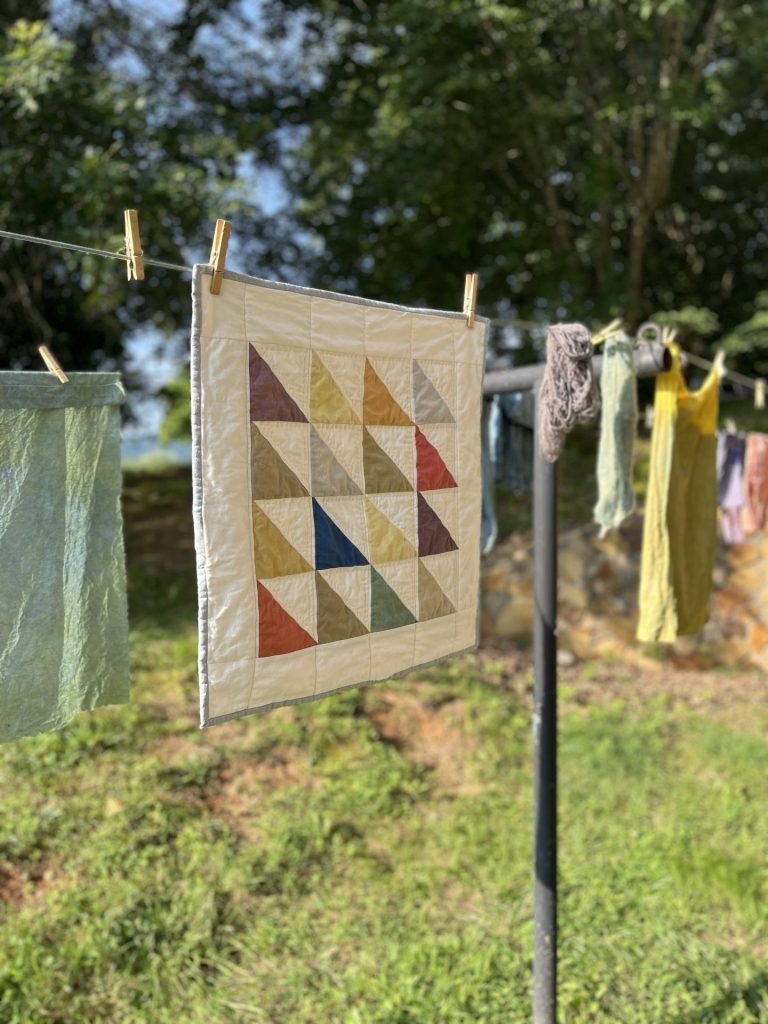
Get Started Today
Ready to dive into eco-friendly quilting? Start by sorting through your fabric scraps, digging out that bag of old clothes, or visiting a thrift store for inspiration. There’s no need for a perfect plan—just a willingness to experiment and have fun. Try piecing together a small block with your favorite scraps, or challenge yourself to make a quilt using only what you already own. The possibilities are endless, and the earth will thank you for it.
Have a favorite tip for quilting with recycled materials or a photo of your own eco-friendly quilt? Drop it in the comments—we’d love to see your creations and hear your ideas!
Happy (and green) quilting!
